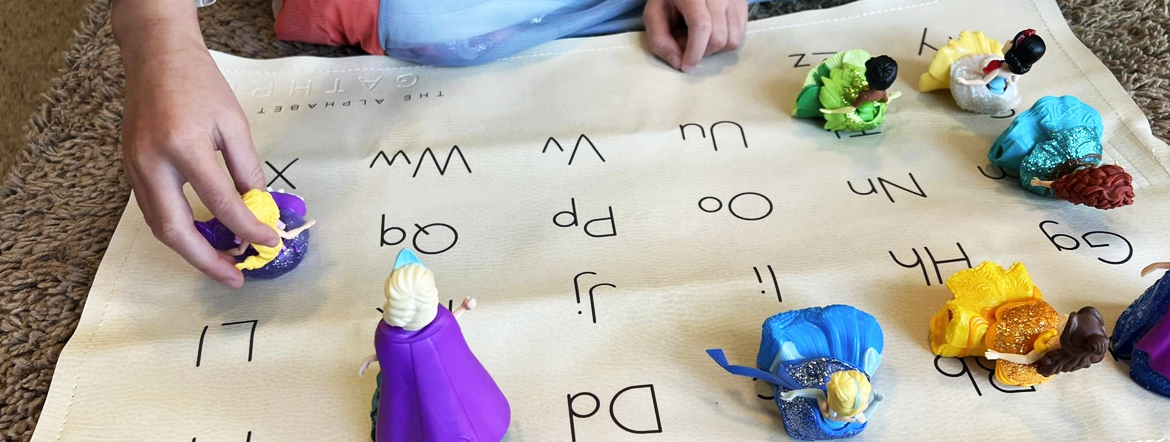What is Occupational Therapy?
Pediatric occupational therapists work to improve the function and independence of children and teens with disabilities, injuries, or illnesses. They provide therapeutic interventions that help develop their fine motor skills, visual motor and visual perceptual skills, work on increasing independence for self-care skills and improve sensory processing skills. Through play, children develop age appropriate skills while also building up their confidence and self-esteem.
When to Get an Assessment
One of the first things I tell parents I talk to is to go with their gut. Parents know their children better than anyone and if you feel like something isn’t right or you see your child struggling, reach out and see if your child should be evaluated. Some of the many reasons parents or teachers seek out evaluations are the following:- a child has developmental delays and is not reaching milestones as expected
- a child presents with sensory processing difficulties such as increased energy, difficulty with focus and attention, tactile defensiveness, picky eating and difficulty with self-regulation.
- a child seems overly sensitive to clothing and different textures
- delayed fine motor skills
- a child is having handwriting challenges in school
- a child is clumsy tripping and falling more often than what is considered normal
- a child is low-tone and has difficulty sitting up for long periods of time, leans on other people or asks to sit in your lap during circle time
- a child has difficulty with routines and transitions and experiences increased meltdowns during these times

Newborn to 6 Months
- child will open and close fists
- child brings hand to mouth
- child will hold a toy in their hands
- child uses arms to purposely swing at toys
- child brings hand to mouth consistently
- child pushes up onto elbows/forearms when on their tummy
6 to 12 Months
- child uses consistent and purposeful reach
- child moves an object between hands
- child begins to finger feed when eating large foods
- child will lean on hands during supported sitting
- child begins to use finger to poke objects
- child will use purposeful grasp and release patterns when putting objects in a container
- child will use a raking grasp to pick up smaller objects
- child develops a pincer grasp to pick up small objects/cereal
- child begins to imitate tool use; for example, hair brushing, brushing teeth, etc.
- child uses hands to push, pull, squeeze, rotate toys
- child removes socks
1 to 2 Years
- child begins to feed self using hands or age appropriate utensils
- child points to people and objects using their pointer finger
- child completes simple shape puzzles
- child brings hands to midline for functional use
- child holds crayons with a fisted grasp
- child can stack 2-6 blocks
2 to 3 Years
- child feeds self using utensils and begins to drink from an open cup with minimal spillage
- child can screw and unscrew lids on containers
- child can string a series of larger beads
- child imitates vertical and horizontal lines and a circle
- child holds a writing instrument using fingers and their thumb with a pronated wrist
- child begins to use scissors to snip into paper
- child can stack up to 8 blocks
- child can put together 4-12 piece interlocking puzzles
3 to 4 Years
- child independently feeds self using utensils and drinks from an open cup with little spillage
- child strings small beads
- child can manipulate snaps, begins to assist with zippering and begins to manipulate larger buttons with assistance
- child can fold/crease a piece of paper
- child can imitate a cross with bisecting lines
- child can draw a person with two body parts
- child holds writing instruments with thumb and fingers
- child can cut a piece of a paper in half
- child can cut on a thick, straight line
- child can stack up to 10 blocks
- child can imitate simple block designs (train, bridge and wall)
- child can put together 24 piece interlocking puzzles
4 to 5 Years
- child independently feeds self with utensils and drinks from an open cup with no spillage
- child imitate blocks designs with 4-6 blocks
- child manipulates buttons
- child can lace sewing cards/boards
- child can manipulate all types of fasteners
- child can imitate diagonal lines, a square, triangle and an “X”
- child can draw a person with at least 3 body parts
- child can cut out simple shapes (circle, triangle and square)
- child can put together 48 piece interlocking puzzles
5 to 6 Years
- child can build complex designs with Legos and other types of manipulative building toys
- child can copy uppercase letters
- child can write their name
- child can draw a person with all body parts and draw more complex pictures
- child can cut out more complex shapes and pictures
- child can dress themselves independently, including smaller buttons, snaps and initiating the catch of a zipper
- child can put together 100 piece interlocking puzzles
